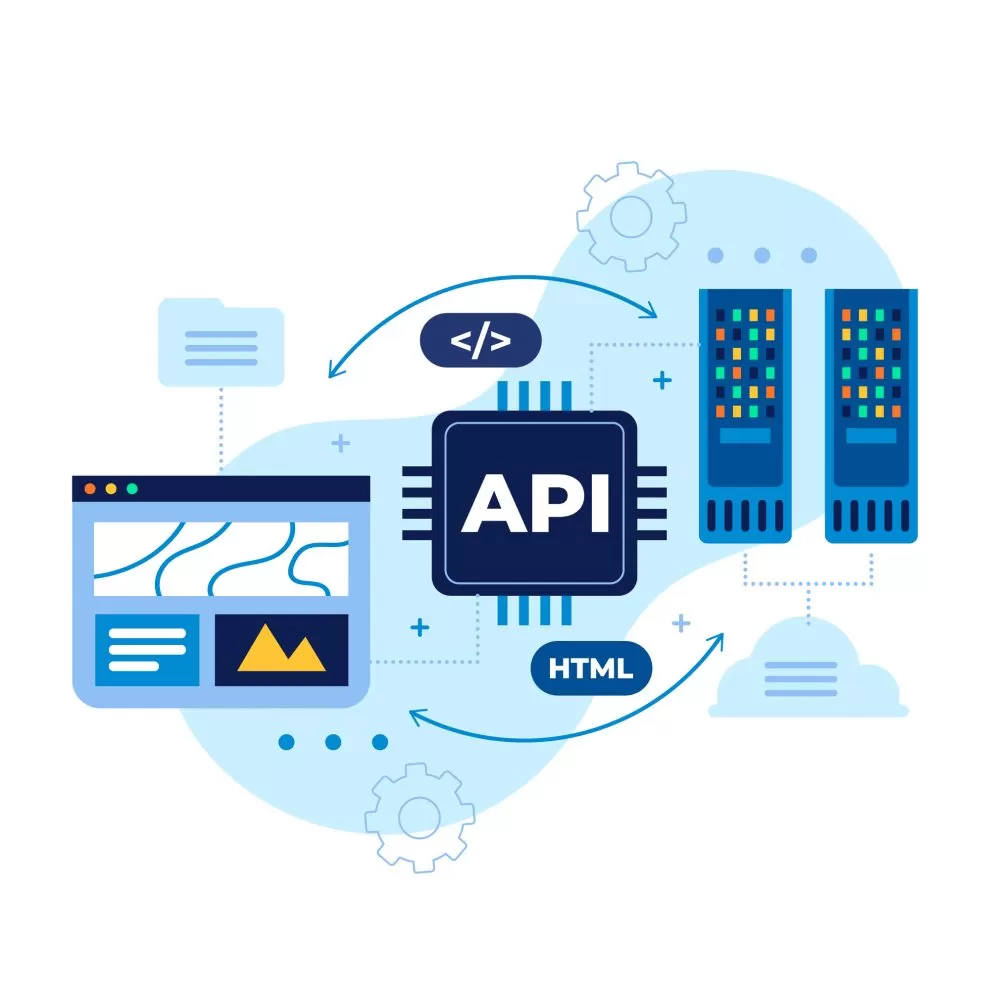In the rapidly evolving realm of software development and architectural design, staying informed about fundamental concepts is paramount. Among these, “Microservices” and “APIs” stand out as cornerstones that define the modern landscape of software engineering. Both play pivotal roles in shaping how applications function and interact within complex digital ecosystems. In this insightful exploration, we embark on a journey through the intricacies of Microservices vs. APIs, unraveling their unique attributes, applications, and the seamless synergy they offer in the creation of resilient and adaptable systems. By understanding the contrasts and convergences of these key elements, we equip ourselves with the knowledge needed to make informed decisions and drive innovation in the dynamic world of software architecture.
Understanding Microservices vs. APIs
Microservices: Breaking Down Complexity
The concept of Microservices is like unwrapping a puzzle, revealing a world of potential in software architecture. Imagine a large, intricate system—perhaps an e-commerce platform handling everything from inventory management to order processing. In traditional monolithic architectures, all these components are tightly integrated, forming a complex and interdependent web. The challenge arises when attempting to make changes or updates. A modification in one area can inadvertently affect other seemingly unrelated parts, leading to unforeseen consequences.
Microservices elegantly address this challenge by breaking down the monolith into a set of smaller, independent services. Each Microservice focuses on a specific business capability, essentially handling a singular function, such as user authentication, payment processing, or product recommendation. These Microservices, operating independently, are akin to specialized mini-applications. They communicate with each other through APIs, establishing a structured and well-defined interaction mechanism.
By segmenting the application into these smaller, standalone entities, development teams can work on individual Microservices with a high degree of autonomy. The beauty lies in their independence—the ability to deploy, scale, and upgrade each Microservice without causing a domino effect across the entire system. It simplifies the development process, fosters faster innovation, and enhances overall system resilience.
APIs: The Communication Bridge
In the vast realm of software, APIs play a fundamental role as the communication lifeline between different entities. Picture APIs as interpreters facilitating seamless conversations between Microservices and other components, both within the application and beyond. They define a common language—methods, protocols, and data formats—ensuring effective communication and interaction.
For example, envision an e-commerce Microservice responsible for managing product inventory. When a customer places an order, this Microservice uses APIs to communicate with other services, like payment processing or order fulfillment. APIs enable the necessary exchange of information, instructing the payment service to process the transaction and updating the order fulfillment service with the details.
APIs offer a standardized and well-documented interface, abstracting the underlying complexity. They not only facilitate Microservices interactions but also open doors to external systems, allowing integration with third-party services, mobile applications, and other platforms. This extensibility empowers businesses to enrich their offerings, forge partnerships, and ultimately enhance user experiences.
In essence, the relationship between Microservices and APIs is symbiotic. Microservices rely on APIs as the channel for communication and collaboration, while APIs leverage Microservices’ modularity to facilitate structured interactions. Together, they form a powerful framework, enabling the development of scalable, adaptable, and robust applications, ready to meet the evolving demands of the digital landscape.
Also Read: API Testing: What It Is, Why It’s Important & How to Do It
Use Cases: Where They Shine
Understanding the strengths of Microservices vs. APIs is essential to leverage their potential effectively. Let’s explore scenarios where each ‘Microservices vs. APIs’ shines brightly in the realm of software development.
Microservices Use Cases
E-commerce Platforms:
Imagine a bustling e-commerce platform where various functions like product catalog, payment processing, and order management are distinct yet interconnected processes. Microservices are a perfect fit here, allowing each function to operate independently. For instance, the product catalog Microservice can be updated without affecting the payment processing Microservice, enhancing agility and facilitating rapid updates to handle evolving inventory and transaction needs.Financial Applications:
Financial applications dealing with numerous operations such as account management, fund transfers, and loan processing benefit greatly from a Microservices architecture. Each of these operations can be encapsulated into a Microservice, ensuring that specific functionalities can be modified or scaled independently, maintaining the high-security standards demanded by the financial sector.Media Streaming Services:
In a media streaming service, Microservices enable efficient management of content delivery, user authentication, subscription billing, and recommendation systems. Each Microservice caters to a specific aspect of the platform, offering optimal performance, scalability, and personalization for the users.
APIs Use Cases
Social Media Integration:
APIs play a pivotal role in integrating social media functionality into various applications. For instance, enabling users to log in using their social media credentials or share content seamlessly across platforms. APIs provide the necessary hooks to access and interact with social media platforms in a standardized and secure manner.Weather Applications:
Weather applications often utilize APIs from meteorological services to provide real-time weather updates. The application communicates with the external API, fetches relevant data, and presents it to the user, ensuring an accurate and up-to-date weather forecast.Travel Booking Platforms:
In the travel industry, APIs are extensively used to integrate flight, hotel, and car rental information. Travel booking platforms rely on APIs to fetch real-time availability, prices, and booking details, offering users a comprehensive and convenient booking experience.
In conclusion, Microservices and APIs shine in diverse use cases across industries, addressing specific needs and challenges. Microservices excel in managing complex functionalities within an application, promoting agility and scalability. On the other hand, APIs act as the linchpin for seamless integration, extending functionality, and enabling connectivity with external systems, enhancing the overall user experience. Combining these two powerful elements strategically can revolutionize the way we design, develop, and deliver software solutions in our ever-evolving digital landscape.
Microservices vs. APIs: Bridging the Gap
In the ever-evolving landscape of software architecture and development, “Microservices” and “APIs” are often perceived as interchangeable terms. However, they represent distinct yet interconnected facets of modern application design. To truly appreciate their impact and potential, it’s crucial to elucidate the differences and, more importantly, understand how they coalesce to build powerful and scalable systems.
Microservices: A Paradigm of Modularity
At its core, a Microservices architecture represents a philosophy of breaking down monolithic applications into smaller, more manageable, and independently deployable units. These units, known as Microservices, encapsulate specific business functionalities. Imagine them as specialized tools in a toolkit, each serving a specific purpose.
A Microservice focuses on a particular business capability, such as handling user authentication, managing product inventory, or processing payments. This specialization allows development teams to work on individual components autonomously, fostering rapid development cycles and quicker deployment of updates. It’s akin to constructing a complex jigsaw puzzle, where each piece fits seamlessly into the overall picture while being self-contained.
APIs: The Nexus of Communication
Contrary to Microservices, which emphasize internal modularity, APIs are all about external communication. APIs, or Application Programming Interfaces, act as bridges that enable different software components, including Microservices, to communicate and interact with each other.
Think of APIs as a universal language. They define the rules and protocols for how different software entities can talk to one another. APIs standardize communication, making it possible for various systems and services to understand and interact with each other, regardless of their underlying technologies.
The Symbiotic Relationship
Now, let’s consider how Microservices and APIs work in harmony, complementing and enhancing each other’s strengths.
When we build a Microservices-based application, each Microservice, with its specific business function, needs a channel to communicate and collaborate with other Microservices. This is where APIs step in as the facilitators of this inter-service communication.
Picture a Microservice responsible for user authentication. When another Microservice needs to authenticate a user, it communicates with the authentication Microservice through a defined API. The API acts as the contract, specifying how to request the authentication and what information to provide. It’s akin to a conversation: one Microservice asks a question (sends a request), and the other Microservice responds with an answer (sends a response), all guided by the API contract.
This seamless collaboration enables Microservices to work together, creating a sophisticated, yet modular and manageable, application.
Embracing the Duality
In the grand scheme, Microservices and APIs are not competitors but collaborators. Microservices represent the building blocks, providing agility and scalability, while APIs serve as the communication channels, enabling seamless interaction. Together, they form a symbiotic relationship, enhancing the flexibility, scalability, and robustness of modern applications.
To leverage this duality effectively, developers and architects must adeptly design and manage both Microservices and APIs. Understanding their individual strengths and recognizing how they can complement each other is the key to constructing a resilient, adaptable, and future-proof software ecosystem. In essence, it’s about bridging the gap between modular architecture and efficient communication, forging a path toward the future of software engineering.
Also Read: The top API security risks and how to mitigate them
Challenges and Considerations
Implementing a Microservices architecture and managing APIs within it bring about a transformative approach to software development. However, like any architectural paradigm, they present unique challenges and considerations that need to be carefully navigated. Let’s delve into the intricacies of these challenges and considerations to better comprehend the landscape of Microservices vs. APIs.
Challenges of Microservices
Complexity of Inter-service Communication:
As the number of Microservices grows, managing their interactions becomes complex. Coordinating communication, ensuring data consistency, and handling potential failures require meticulous planning and implementation.Data Management and Consistency:
Maintaining data consistency across Microservices can be challenging due to their distributed nature. Coordinated transactions and ensuring eventual consistency are vital aspects that demand careful design and synchronization mechanisms.Service Discovery and Load Balancing:
Discovering and managing the availability and load of numerous Microservices in real-time is a non-trivial task. Load balancing traffic across various instances of a Microservice requires sophisticated solutions to ensure optimal performance.Monitoring and Debugging:
Monitoring the performance of each Microservice and identifying issues in a distributed environment is more intricate than in monolithic architectures. Tools and practices need to evolve to effectively monitor, debug, and trace transactions across Microservices.
Challenges of APIs
Security Risks:
APIs, being exposed to the outside world, pose security risks if not adequately secured. Authentication, authorization, and protection against potential threats like data breaches and denial-of-service attacks are paramount.Versioning and Backward Compatibility:
Evolving APIs while maintaining backward compatibility for existing clients can be challenging. Changes in the API structure or behavior may disrupt applications dependent on the older versions, necessitating careful versioning strategies.Rate Limiting and Throttling:
Balancing API usage is essential to prevent abuse or overuse. Rate limiting and throttling strategies are necessary to ensure fair usage of APIs and maintain optimal performance for all consumers.Documentation and Usability:
Well-documented APIs are crucial for developers to understand their functionality and usage. Inadequate or unclear documentation can lead to misuse, errors, and inefficiencies in integrating with the API.
Considerations for a Successful Implementation
Design for Failure:
Acknowledge that failures can and will happen. Design Microservices with built-in redundancy and error-handling mechanisms to ensure system resilience and graceful degradation during failures.Implement Comprehensive Testing:
Rigorous testing, including unit testing, integration testing, and end-to-end testing, is critical. Automated testing frameworks and practices should be in place to validate Microservices and APIs across various scenarios.Prioritize Security:
Embed security practices within the development lifecycle. Apply encryption, access controls, and security standards for both Microservices and APIs to safeguard sensitive data and ensure a secure system.Establish a Strong DevOps Culture:
Implement a robust DevOps culture to streamline deployment, monitoring, and maintenance. Continuous integration, continuous deployment (CI/CD), and automated deployment pipelines are crucial for managing the dynamic nature of Microservices and APIs.
Also Read: Harnessing the Power of AI in Backend Development
Conclusion
The comparison between Microservices and APIs is akin to understanding the intricacies of a well-orchestrated symphony. Both are vital components of modern software development, each with a distinct role and purpose. Microservices provide a means to break down the complexities of large applications into manageable, modular units, fostering agility and scalability. On the other hand, APIs act as bridges, facilitating communication and interaction not only between Microservices but also with external systems.
In this journey through the realms of Microservices vs. APIs, we’ve explored their fundamental definitions, use cases, and the symbiotic relationship they share. Microservices, as modular entities, offer autonomy and rapid development, allowing teams to work on specific functionalities without disrupting the entire system. APIs, serving as communication channels, provide standardized interfaces, enabling seamless integration and enhancing the extendibility of applications.
However, the path to a successful implementation is not without its challenges. Microservices pose difficulties in inter-service communication, data consistency, and monitoring, necessitating comprehensive strategies to address these issues. APIs, with their increased exposure, require careful consideration of security, versioning, and usability.















